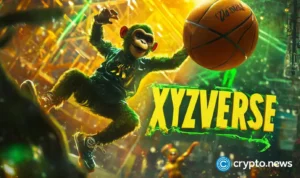Nexbridge, a digital asset issuer, has introduced USTBL—a regulated gateway for investors to tap into U.S. Treasury returns through blockchain technology. Anchored on Blockstream’s Liquid Network, the offering leverages the firm’s Asset Management Platform, aiming to ensure streamlined compliance and bolstering transparency. The issuance kicks off with a soft cap set at $30 million.
Blockstream’s Liquid Network Hosts USTBL
While tokenized treasury securities have been tested in various ways, this marks the debut of a regulated public offering designed to operate seamlessly across different jurisdictions. Nexbridge envisions this initiative as a global blueprint for compliant digital asset offerings.
USTBL adheres to El Salvador’s Digital Asset Law, which is widely recognized for its thorough framework on tokenized securities. The asset will make its trading debut on Bitfinex Securities, a platform operating under the same legal framework. Nexbridge’s move dovetails with El Salvador’s broader blockchain ambitions to revolutionize its financial infrastructure.
The Liquid Network plays a pivotal role in USTBL’s architecture. Overseen by Blockstream, this network supports secure tokenization and is governed by a consortium of 70 companies. The introduction of USTBL is projected to push the combined value of real-world assets on the blockchain beyond $2 billion.
Nexbridge and its collaborators highlight cost-effectiveness and greater accessibility as standout advantages of tokenized securities. By cutting out intermediaries like custodian banks and traditional trading platforms, Nexbridge aims to simplify investment in U.S. Treasuries without compromising international regulatory standards.
This initiative aligns with a broader financial shift toward digitizing traditional assets through blockchain technology. Nexbridge’s offering could serve as a compelling case study for connecting legacy financial systems with decentralized innovations. However, whether this approach gains widespread traction remains an open question.
Read the full article here










